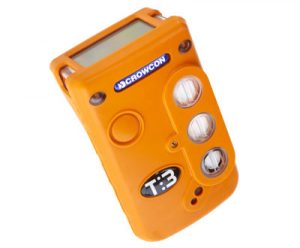Gases can be one of the most harmful substances in a work environment because they’re invisible and not easy to smell. Having industrial gas detectors in place can save your workers from getting toxic poisoning because of an unknown gas leak. Gas monitors are made up of sensors that measure the amount of gas in the area. The purpose of a gas monitor isn’t necessarily about detecting whether gas is present, but rather to report if there is a change in the level of gas in the work environment.
Using a four gas monitor helps in the detection of more than one type of gas. Knowing which gas monitors will best protect your workers and get you the most protection for your money is crucial.
Pre-Purchase Questions
Before buying a gas monitor, you will need to assess some key elements of your business. Gas monitors have a shelf life of up to 2 years, but all of them vary slightly. Most monitors are small in size, portable, and wireless, though fixed detectors are available. Since portable monitors are used by one individual at a time, you will need to know how many employees will need a monitor at any given time. Also, be sure to have a solid understanding of what gas employees in your business could come into contact with.
Which Monitor Do I Need?
To determine the best monitor for your business, a professional should perform a hazard assessment. They will evaluate if the location you are in a confined space, home to explosives, or in a dangerous place, and will determine what gases are most likely to be present. Once you know this, take some time to understand which monitors will best detect these substances. Last, you will want the communication from the system to the workers to be the quickest and clearest possible. There are options of lights, sounds, vibrations, or a combination of these to alert workers so they can move to safety. There are different types of alarms to choose from, but utilizing technology to send the data back to a control center is helpful. It’s away from the contaminated area and can offer more insight later on.

Types of Monitors
- Toxic monitors sense if any harmful gas is in the area. They’re often used to check for carbon monoxide. Carbon monoxide is very toxic and can lead to death if a person is exposed to it for too long. Carbon monoxide monitors are probably the most common and well-known because many people install them in their homes.
- LEL (lower explosive level) monitors are able to pick up combustible gases in the air before they come in contact with a flame and cause an explosion.
- Four gas monitors measure carbon monoxide, hydrogen sulfide, oxygen, and LEL. These monitors are great because they can pick up more than one type of gas at a time.
Essential for Safety
Although finding the right gas monitors and spending the money to get them isn’t a fun task, it can save lives. If you’re working in an environment with explosives, having an LEL gas detector is essential. Once you know the gas detector you need, head to dodtec.com, where you can purchase any of the types of monitors mentioned above and keep your workers safe!







